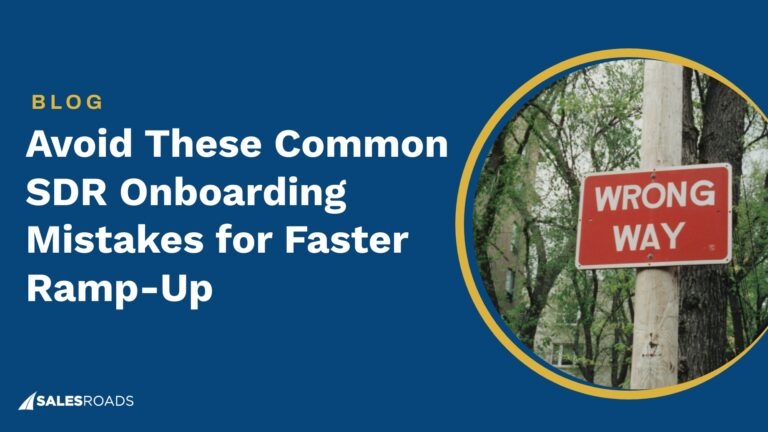What are Cold Call Objections?
Cold call objections are resistive statements that prospective customers use to avoid conversations and pitches over the phone. Objections are a normal part of any sales process, but top salespeople possess the skills to handle them without friction. They’re also a rich opportunity to gain insight into prospects’ concerns while creating strong, tailor-made value propositions.
Prospecting occurs early in the sales process, and losing potential customers at this stage makes it difficult to fill the pipeline with quality leads. By understanding the common objections your SDRs face, you can train them to overcome these sales roadblocks and increase both lead volume and revenue.
Types of Sales Objections
Most objections stem from a lack of budget, need, trust, or urgency. Sales professionals need to be able to identify each one to deal with them appropriately.
Lack of budget
Price objections are the most common types that occur during cold calls. Prospects need to feel confident they’re receiving worthwhile value for their money, and anything that suggests otherwise immediately turns them off.
Lack of need
Prospects refuse your calls when they can’t see how your product or service will benefit their business. This objection is a prime opportunity to extract vital information about the client and establish your company’s value to them.
Lack of trust
Many prospects may be unfamiliar with your company, and their impulse response to that uncertainty is to reject your offer. People want to do business with companies they know and trust.
Lack of urgency
This could be a genuine objection, or the prospect could simply be dismissing you. If your offering isn’t a priority for the lead, aim to schedule an appointment at a later date to discuss their needs.
Preparing for Objections Before the Call
Pre-call research
In-depth research prior to a call gives you the knowledge and preparation to manage objections. It identifies prospects’ pain points and helps you position your product or service as a valuable solution.
Practice your responses
Expect to hear an objection in every call. Note the common blocks that arise during cold calls and formulate responses to them. Product cheat sheets and conversational scripts are great resources but often don’t match what happens in reality, so don’t rely on them.
Roleplaying difficult scenarios with your colleagues is another great way to prepare for objections. Have them pretend to be prospects you pitch to and move through the various types of refusals.
Through practice, you’ll discover innovative techniques to overcome objections and implement them with confidence.
How to Minimize Objections During the Call
Use a powerful opening statement
Opening lines are vital to a cold call’s success. What you say and how you say it at the beginning dictate the direction of the conversation, so start off on the right foot to boost your chances of grabbing the lead’s attention.
Build rapport
Nurturing familiarity is critical for SDRs to achieve superb cold calling results. Engage the prospect in an enjoyable conversation to minimize objections during the call.
Be proactive
As previously discussed, thorough research allows you to anticipate and address the prospect’s concerns before they arise.
Active listening
Learn to pause and listen empathetically to the prospect. Many salespeople get carried away with their pitch and barely let the lead express themselves.
Active listening helps dig into their pain points and uncovers areas where your product or service brings value. Prospects are more likely to become customers when they feel heard.
Timing
The timing of a cold call is highly influential to its success as well. According to a CallHippo study, the best time to contact prospects is on a Wednesday between 4 p.m. and 5 p.m., followed by 11 a.m. to 12 p.m. They also advise avoiding outreach between 1 p.m. and 3 p.m.
How to Overcome Cold Call Objections
The 3 F’s method
The 3 F’s (“feel, felt, found”) method is a popular technique for addressing sales objections. It involves empathizing with the prospect’s concerns, relating them to others’ experiences, and providing a solution:
- Feel – You acknowledge and empathize with the prospect’s objection. It indicates you’re listening to them and builds rapport.
“I understand how you feel about using cold calls for generating leads.”
- Felt – Share relatable experiences from previous clients who had similar concerns. The prospect develops a connection knowing others have faced the same issue.
“We’ve had clients who initially felt the same way about the effectiveness of this process.”
- Found – Finally, present a positive outcome by explaining how clients who had similar concerns received value after using your product or service. This reassures the prospect and highlights the potential advantages of moving forward despite their initial hesitation.
“However, they found that expert cold calling services provide businesses with high-quality leads, improved cost savings, increased efficiency, and extra room to generate revenue and grow.”
David Kreiger, the founder of SalesRoads, explains the 3 F’s method:
Use follow-up questions
This method of handling objections employs secondary questioning to uncover vital information about the prospect for an effective resolution:
- Validate – The first step is to validate the prospect’s block. Accept it exists and state that it’s understandable to have that concern.
Say, “I get that,” “That’s okay,” “Thanks for letting me know,” or “I understand.” This prevents the prospect from hanging up on you.
- Label – Next, label the objection to show the lead you genuinely heard what they said. Thanks to this acknowledgment, they’re more likely to be receptive to your resolution.
A labeling statement would sound like, “It seems like you…” or “I think you…”
- Follow up – A follow-up question is necessary to gain more details and keep the conversation going or inform your objection resolution.
Follow up on the objection with questions like:
“When is a better time to reach you?”
“Who is in a better position to handle issues like this?”
“What are your priorities at the moment?”
Common Cold Call Objections and Resolutions
“I’m the wrong person to speak to.”
Everyone makes mistakes, and reaching out to the wrong person in an organization is a common error in cold calling. However, you can salvage the situation to capture the right contact:
“Sorry to bother you, but who should I talk to about this?”
Or
“Which department would be the best to reach out to concerning this?”
If they refuse to share the decision maker’s contact, offer to send a demo, white paper, or any other relevant proposition for your pitch:
“Do you mind if I send you some information on our company to pass on to the right person?”
Update your list with the right information after the call to prevent errors like this from recurring.
If the person provides the phone number you need, you can reach out to the decision maker like this:
“Hey [prospect’s name], I spoke with [previous contact] earlier and they said you’re the person to talk to about [xyz].”
“Send me more information.”
A prospect’s request for more information can be a positive or negative response, depending on the context. It could be a decoy to get off the phone or an actual interest in learning about your company. Either way, offer to give them a quick rundown while you’re on the line:
“Can I take [x seconds] to explain how I think you’ll benefit from [product or service] before sending you more information?”
If they reject this request or ask for more details after you’ve explained your value prop, suggest a meeting at their convenience:
“Our clients often sign up with us after a full demonstration or presentation. When is a good time for us to meet for this?”
If the prospect insists on getting information, find out what they specifically want to know. Their response to this often exposes either the legitimacy of the objection or their attempt to brush you off:
“I’d love to share some information via email, but I don’t want to clog your inbox. Is there anything specific you’d like to know?”
Then, follow with:
“I’ll send some information about [xyz]. Can I call back in a week to answer any questions you might still have? What day and time work best for you?”
This serves both to supply them with the information and lay the foundation for a future call. When you contact them again, it’ll be much easier to build rapport and close a deal.
“I’m not interested.”
Prospects impulsively respond this way when they realize they’ve picked up a cold call. Many times, it’s not true — after all, you’re reaching out to them because they’re a potentially good fit for your service.
Ask what part of your offering, industry, or company might have interested them:
“I’d like to know, though — Is there any part of [xyz] that may interest you?”
Connect their response to your value proposition and make a case for your product or service. If they don’t respond, embrace this feedback to improve your opening statement. How you present your value proposition in the cold call opener influences the potential customer’s interest.
You can also try to schedule a product demonstration to see if they’re interested:
“Would you be interested in a short demo? Most of our clients understand our product’s value after seeing it in action. When can we schedule that?”
“How did you get my contact details?”
Prospects have good reason to be annoyed by cold callers since they didn’t consent to the interaction. If you were referred by or got the contact from a company employee, state that in your opening line before the prospect asks to support your legitimacy.
Calmly reassure the prospect that you obtained their details from a lead capture form they filled out on your website or through research into their industry:
“I found your number while researching companies that could benefit from our offerings. I’m calling to know if [your company] could help with [xyz].”
“I’ve never heard of your company.”
This objection often stems from a lack of trust. Your value proposition may be appealing to the prospect, but they’re hesitant due to your company’s lack of visibility. To boost your credibility, briefly explain your company’s history and how it’s impacted the client’s industry:
“At [your company’s name], we [value prop]. With our [x] years of experience, we’ve worked with clients in the [x] industry and produced [y] results. Would you like to know how we can help you [value prop]?”
“How much does it cost?”
Discussing price on a cold call slashes your chances of securing a successful conversion. It can be misconstrued as interest in your company and become a stumbling block in the conversation if they insist on learning this information.
SDRs should drive home the product or service’s value and build rapport before talking about cost. Then, inform the prospect that pricing depends on their specific needs to waylay their question for a later, more appropriate conversation:
“[Your company’s name] offers customized pricing for companies based on their specific needs and features. We can discuss this on our next call with my colleague.”
“I’m busy.”
A lack of time is every prospect’s number-one excuse to hang up. You have to figure out whether they’re genuinely busy or simply don’t want to talk to you.
A “busy” prospect hasn’t technically rejected you because they’re yet to hear your value prop, so don’t be discouraged. Let them know how quick you’ll be on the call by stating a time frame or promising to be brief:
“I understand. Can I just tell you what we do at [your company] in [x seconds]?”
Or
“I promise not to take up your time.”
If the prospect is persistent in their preoccupation with something more important at the moment, ask for a better time to call them back:
“It seems you can’t talk right now. When is a good time to call you back?”
If you’re unable to ask for a callback, send them an email with a call invite, or let them book an appointment on your calendar.
“We already use your competitor”
Many salespeople will end the conversation here, but it’s a rich opportunity to highlight where your company can provide value for the prospect’s company. Ask strategic questions to gain insight into the current relationship between the buyer and your competition:
“Would you say your experience with [competitor] is a 10 out of 10?”
This entices them to discuss the benefits they receive from your competition. You can then probe into areas where you think you’ll offer better features or services:
“Would you like us to review this service from a professional standpoint and see if there are any areas to improve?”
The presence of an incumbent provider shouldn’t deter you from building relationships with the prospect. Treat it as viewing an insider’s perspective on the processes that need your product or service so you can position yourself as a strong contender when they decide to switch providers.
Gatekeeper objections
Gatekeepers are every cold caller’s nightmare. These are receptionists and administrative or personal assistants who screen calls to control access to the decision-maker and prevent unnecessary interruptions to their business schedules.
Your call is a necessary interruption, so the goal is to get past the gatekeeper as quickly as possible and establish contact with the decision-maker. Here are a few ways to conquer gatekeepers during cold calls:
- Build rapport – Work to establish a friendly and professional rapport with the gatekeeper. A relationship increases the chances of them passing you on to the decision-maker.
- Be direct – State the purpose of your call and emphasize its relevance to the decision maker.
- Leverage referrals – Mentioning a referral or another contact within the organization improves your credibility and raises the likelihood of reaching the decision-maker.
- Follow up – When you politely follow up with your prospect despite meeting the gatekeeper’s refusal, it signals your commitment and can help you reach the decision maker.
Justin Orden, Head of Sales at Faebl Studios, emphasizes the importance of these points:
“Be confident but not pushy. If the gatekeeper asks for more information, provide enough to pique their interest but not enough for them to make a decision on behalf of the prospect. If the gatekeeper is still hesitant, ask for their advice on the best way to connect with the prospect or schedule a follow-up call at a more convenient time. Remember, the gatekeeper can be your ally, so treat them with kindness and respect.”
When to Accept a Cold Call Objection
Salespeople must learn to tell when a prospect is unwilling to budge. You must understand it’s not always a reflection of your professionalism or skill; sometimes, no simply means no.
Know when to move on from a potential customer. This may be difficult for SDRs because of quotas, but you’re representing a business, and badgering prospects can hinder future opportunities.
Employ the tactics we’ve outlined above to reach an agreement. If none is coming forth, politely thank them for their time and dial other prospects.
Tetiana Sira, Digital Marketing Executive at EnergyCasino, suggests building relationships with prospects who have difficult objections. She explains:
“From a marketing perspective, we know that not every product or service is the right fit for every customer. Similarly, not every objection can be overcome. It’s important to recognize when a customer’s objection is insurmountable, and instead of trying to force a sale, focus on building a relationship with the customer. This approach can lead to future sales opportunities and referrals.”
Cold Calling Objections FAQs
How do I handle aggressive objections?
When faced with aggressive objections, actively listen to the prospect, acknowledge their objection, and respond with empathy. This provides a thoughtful response as you remain calm and professional, enabling you to offer a compromise and close the conversation by asking for a sale or scheduling a follow-up call. Practice brings confidence that you can adapt to objections and close sales.
Are all objections genuine?
Some objections are simply brush-offs. Prospects use closing language to dismiss cold calls because they fail to see the value in the conversation. Learn the difference between a general excuse and an authentic objection (this takes experience).
Should I address objections immediately or wait until later in the call?
Address objections right away to prevent them from becoming larger issues. This also establishes trust and credibility with the prospect. However, if the objection arises later in the call, it may be more appropriate to finish discussing the current topic before tackling the objection.
How can I stay motivated after facing frequent objections during cold calls?
While it’s important to expect objections, you must also stay positive, listen actively, and practice effective responses to minimize feelings of discouragement.
Prioritizing personal development prevents burnout, fatigue, and demotivation while carrying out sales functions. Celebrate small wins to maintain motivation and a positive attitude, even if the call doesn’t result in a sale.
What should I do if a prospect continues to raise objections despite my responses?
In this scenario, Justin Orden recommends you back down and accept the objection. He explains:
“If the prospect has clearly stated they’re not interested, if the salesperson has exhausted possible options for addressing the objection, or if the prospect has a solution that solves the gap you’re trying to create, and no pain has been established, it might be time to gracefully thank the prospect for their time and move on to the next opportunity. And, let’s be honest, if the prospect is outright rude and uses colorful language, it’s probably best to just move on.”
Bottom Line
It’s critical to understand prospects’ concerns and present definitive answers to remove their doubts. Leverage the right techniques to resolve cold call objections and push the conversation forward. With adequate preparation, your SDRs can turn objections into opportunities to build trust and rapport with potential customers and close more deals.











